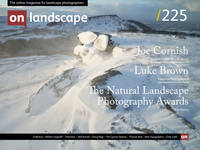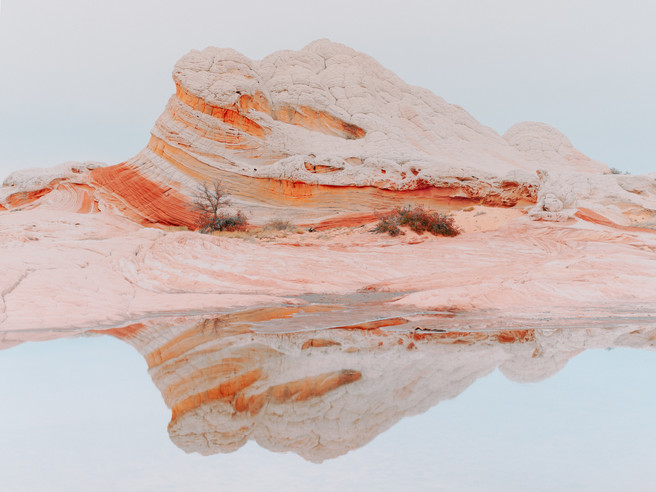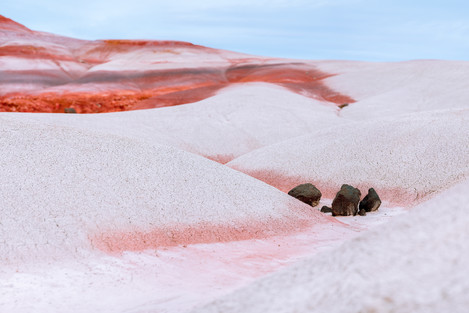New Topographics ~ Cody Cobb

Thomas Peck
The real pleasure of photography is that it forces me to slow down and really look. That’s never easy in our rushed world, so a chance to stop, look and see is truly valuable.
Landscape photography, particularly in the US, has often focused on magnitude, size, drama. The epic-ness of the American terrain lends itself to this. The Grand Canyon, Yosemite, Yellowstone, there are so many places in the US that fit quintessentially into our notion of the sublime. No wonder so many photographers, from Carlton E Watkins through Ansel Adams to Peter Lik want to reflect the climactic enormity of such landscapes.
The great tradition of classical US landscape photography is enveloped in cultural associations with America: frontier myths and a sense of destiny. There is almost a sense of domination in these images. The framing of the land is like a taming of the land. Photographic technique emphasises this approach: ‘straight/pure’ photography, pin sharp detail, immense clarity, the f/64 club etc, these images are designed to say ‘this is what is out there, I saw this’. I do not mean this as a criticism – not in the slightest! I love this sort of photography, both viewing it and taking it; the adrenalin rush of being in a place of great drama has no equal.
There is another peculiarly American landscape tradition which is wrapped up in the growth of the automobile and the freeways. Photographers like Stephen Shore and Joel Sternfeld approached the wide-open plains of the US by exploring them through the car – shooting from the dashboard or rear-view mirror, a frame within a frame. This approach intertwined with the more documentary approach of the New Topographics who focused attention on the intermingling of urban with the natural landscape as witnessed in the seminal exhibition “New Topographics: Photographs of a Man-Altered Landscape” at the George Eastman House (Rochester, New York) in 1975, curated by William Jenkins.
However, Cody Cobbs’ gorgeous images of the American South West work in a very different way to both these traditions. Take the image above, Paria 6, 2018. This is not the ‘beauty of the banal’ often associated with the New Topographics, but nor is it the grandiose statements of the straight photographers. Instead of metaphorically pointing dramatically at what is being seen, Cody’s images reflect on what the photographer has felt in the landscape. The link to this quieter emotional resonance is, to my mind, quite exquisite.
So, what do we feel when we look at an image like Paria 6, 2018? Personally, I get a sense of silence, of gentleness mixed with a slightly unsettling tinge of austerity. It feels very pure, a sort of harmonious simplicity. I think this comes from two basic elements: the colour palette, and the compositional tool that the artist has used: reflection.
The colours don’t feel realistic. The interpretation is pushed into a high key register. The pinky orangeness of the rocks – almost like salmon flesh - has a pastel softness to it which is lovely. The sky is blank – almost white. Certainly, no hint of clouds. (There are echoes here of very early landscape images in which photographers had to choose between a correct exposure for the foreground or for the background, normally the sky, with the result that the sky often bleached out). No deep shadows, definitely no intense blacks. There is very little contrast in the image, no acuity, hard rock becomes soft. The swirl of orange reminds me, quite ridiculously, of ice cream…
The composition is even more fascinating. At first glance, this seems to be a simple reflection, but reflections are never quite that simple. For example, it is not symmetrical. This isn’t an ink blot Rorschach image with a mirrored top and bottom. Objects reflected on water can never be quite symmetrical because the object is being seen from two different perspectives simultaneously. So, the small tree and reddish bush on the rock itself have disappeared in the reflection on the surface of the pool. They have disappeared and the eye searches in vain. Similarly, the main sweep of orange does not appear on the glassy water. The result is a form (object plus reflection) that intrigues because of the spatial ambiguity it creates.
Even though I don’t feel the explosive adrenalin rush of the A. Adams’ style grand vista, nor does my eye/mind search for meaning as with the New Topographics, I find great pleasure from such images of the American South West. Composition, form, reflection, tonality, colour. All combine to create a subtle, quiet, intriguing, lovely image.
For more of Cody’s work see https://www.codycobb.com



